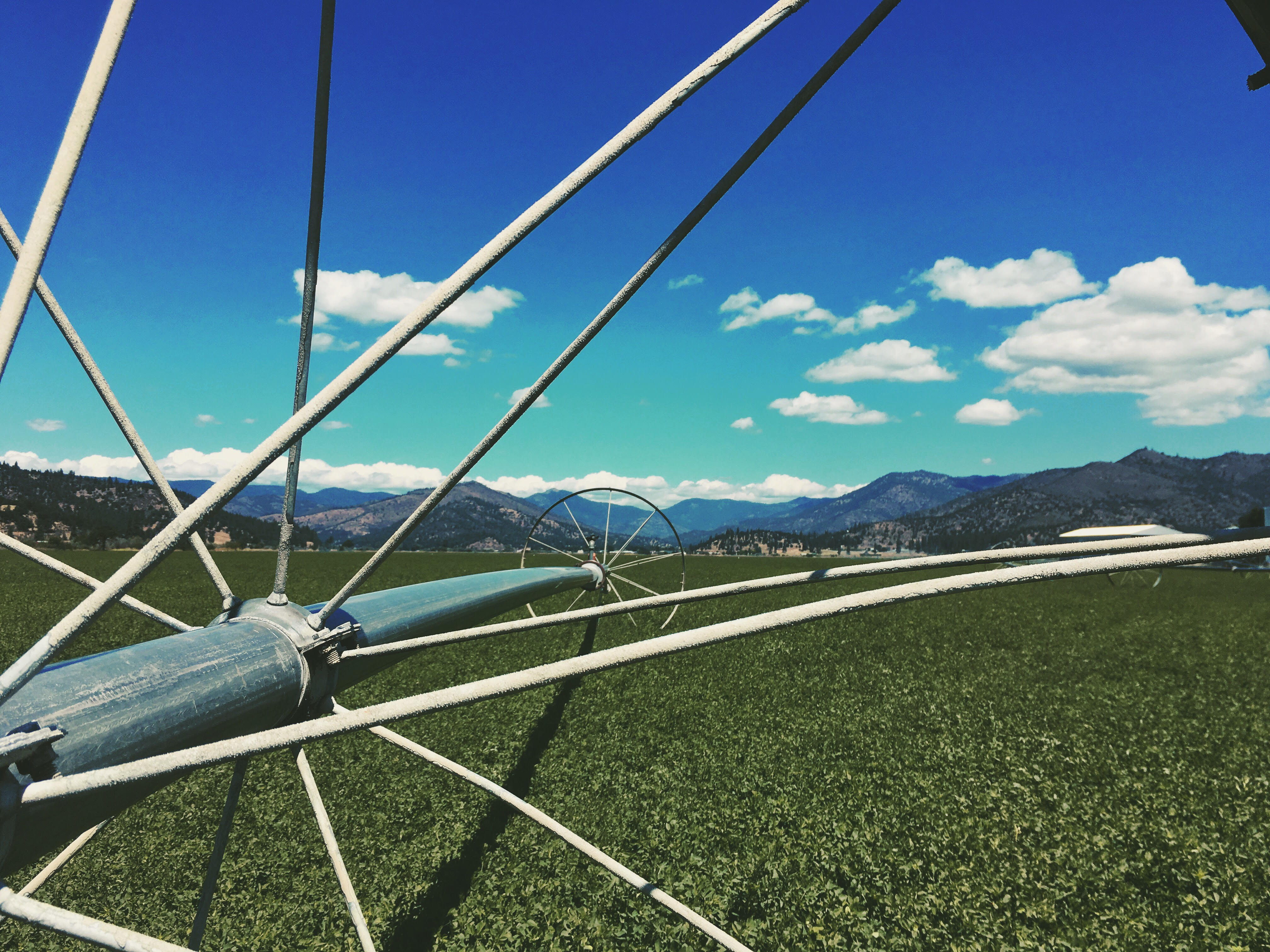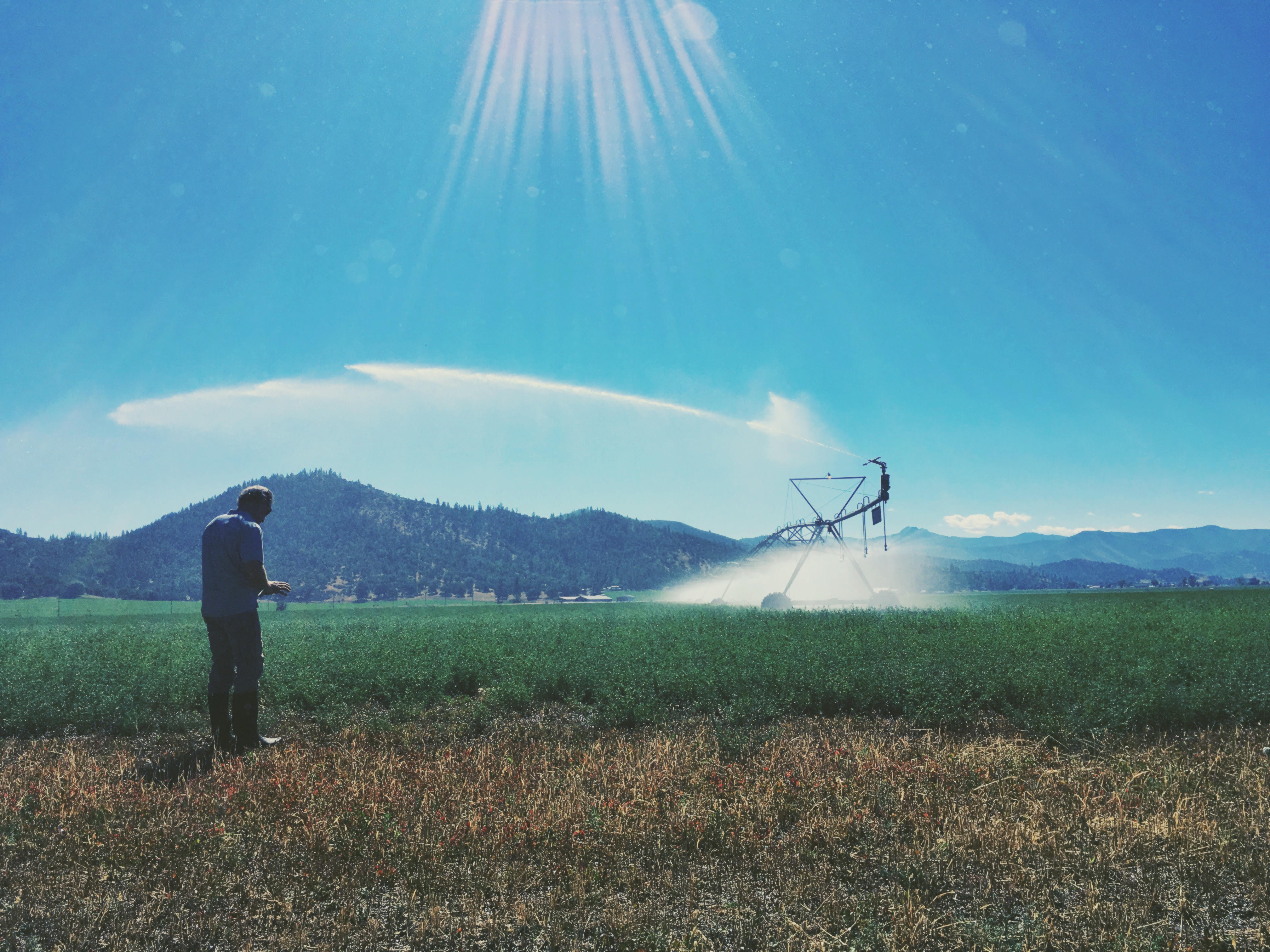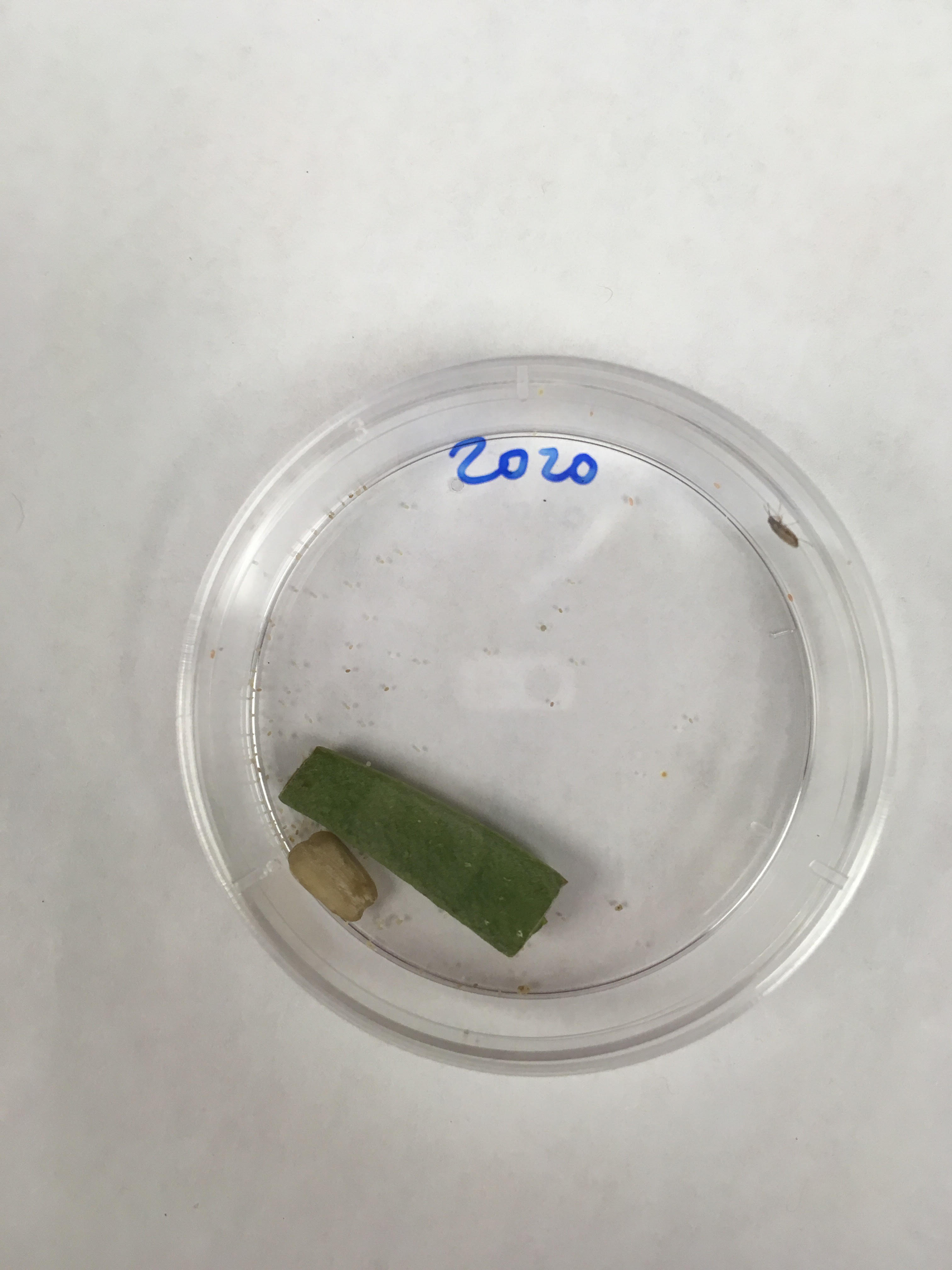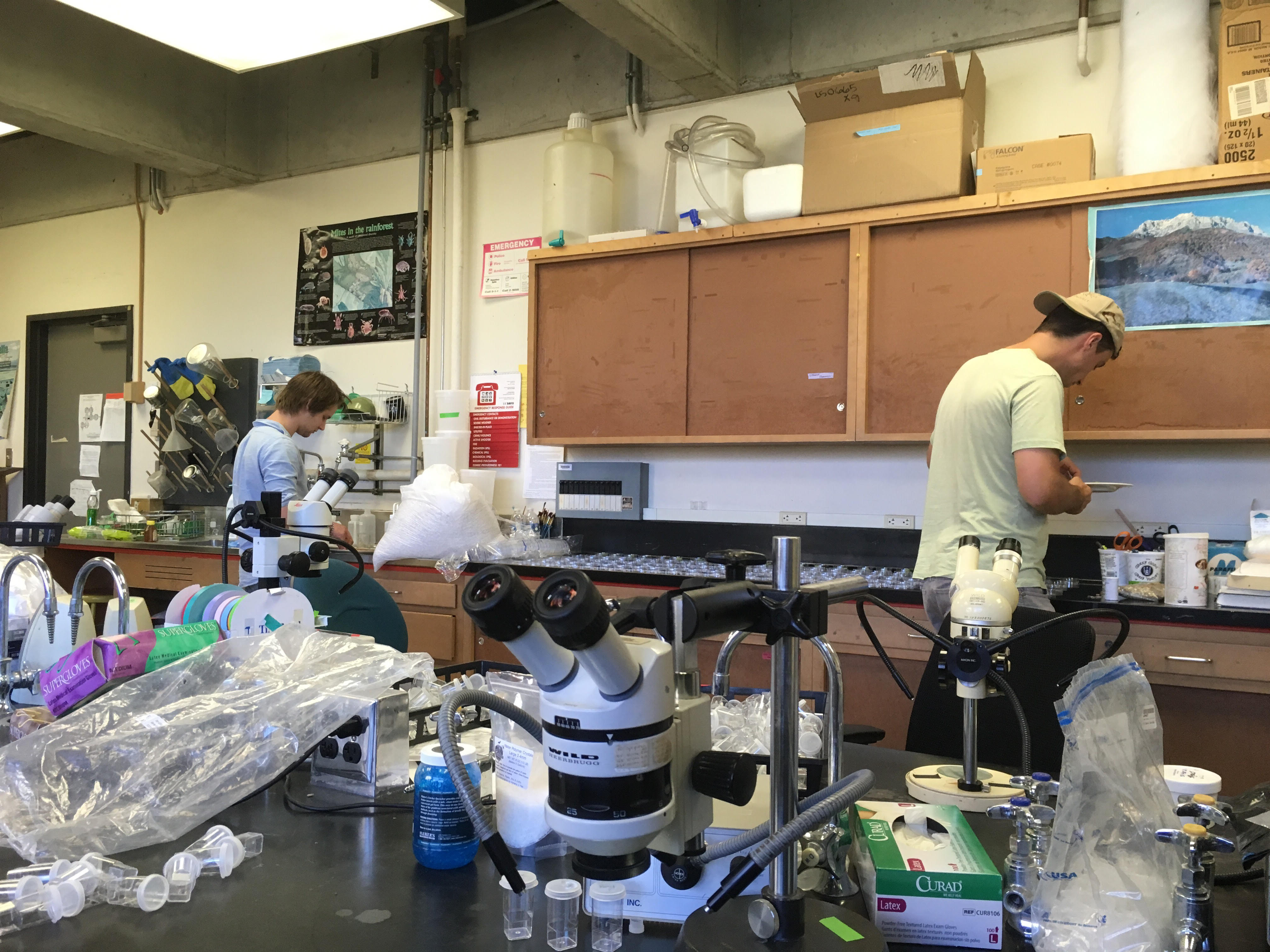Well, I decided to embrace my inner early-career academic millennial and start blogging about the stuff I do, which could ambitiously be referred to as “science”. Science is really just people doing stuff and being sure to write it down, so I figure I’ll get some practice at the writing it down part.
Several members of our lab, including Jay, Nick Booster, Tobias Mueller, and myself, are currently working on a project involving Geocoris pallens, a species of big-eyed bug that is common in California’s cotton and alfalfa fields. It’s a beneficial insect, feeding on basically anything smaller than itself, which includes a number of pest insects. However, our noble hero Geocoris is suffering from a mysterious infection that causes it to eat its own eggs.
This summer, we’ve been working on tracking down zombie bugs, armed with nothing but sweep nets, rifles, machetes, grizzled thousand-yard stares, a menacing soundtra… Wait, no, sorry, I’m getting carried away. We’re tracking down bugs that are infected with something that causes them to become highly cannibalistic. At the moment, we’re pretty sure it’s a virus, but one of our current goals is to identify a virus that is most strongly associated with cannibalistic behavior. In order to figure this out, we need to get lots of bugs and screen them for cannibalistic behavior, hopefully allowing us to separate high- and low-cannibalism individuals for molecular analysis and viral identification. To enable this high-tech stuff, we need to do some real down and dirty low-tech stuff: catching bugs.
We’ve covered a pretty decent range within California, stretching from the Scott Valley in Northern California, near Mount Shasta, all the way down to Bakersfield in the Central Valley. We recently completed two trips to the Scott Valley, which is a beautiful area, prompting some breaks from catching bugs to take some pictures.
Here’s a photo from one the fields we sampled in the Scott Valley. This field has some real nice alfalfa, mmmm mmmmm yeah that good stuff, that tasty candy hay. We learned that alfalfa is priced based on its total digestible nutrient content (TDN), which is affected by things like the leaf to stem ratio. Apparently, the difference between a TDN of 53 % and 56% can mean doubling the value of the hay.
This is the man with the plan and the pocket comb: Steve Orloff, the County Director/Farm Advisor for the UC Cooperative Extension in Siskiyou County. He’s the man we call when we need some nice unsprayed alfalfa in the Scott Valley, and he was kind enough to take us to a number of fields and even help us sweep for bugs. This field is called “Pastures of Heaven”, which is a totally ridiculous name because it’s clearly not beautiful or pastoral or awesome and I definitely do not want to go back there and take a nap in the sunshine.
Here’s a photo of an alien I found in my sweep net bag. It spoke in clicks and hisses and warned me of the coming invasion. If you’re one of the 3 people who might read this blog post, consider yourself warned.
Here’s a Geocoris pallens female happily touring her new apartment. It’s an upscale studio complete with green bean, sunflower seed, and plenty of Ephestia eggs to eat.
(I really wanted to make a joke involving the number of this assay, but in hindsight…)
After returning from a long day in the field, we like to kick back and relax by setting up a couple hundred assays. Tobias and Nick are preparing some lovely homes for the Geocoris females while I stare at bug genitals to separate the males from females.
Well, that’s all for this initial blog post. I’ll try to keep these things short and sweet and full of pictures.
Until next time,
Michael




